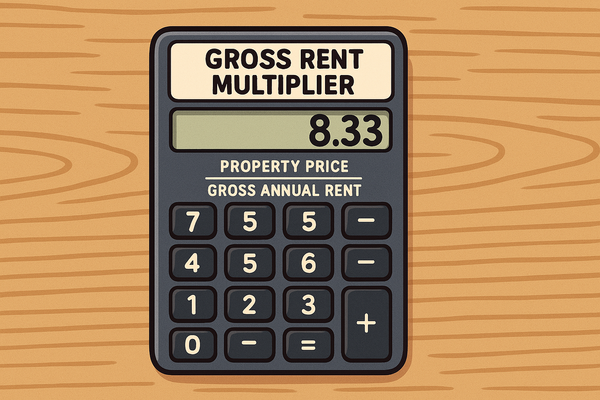Texas Squatter's Rights Guide: 2025 Laws, Recent Developments, and Property Protection
Texas law permits adverse possession claims but recent criminalization of squatting allows property owners to request immediate removal by authorities.

A squatter is someone who occupies a property without the owner's permission and sometimes even claims legal ownership. In Texas, this issue has gained significant attention with recent legislative changes that have criminalized squatting, transforming what was previously handled as a civil matter into a criminal offense.
For property owners, understanding Texas's squatter rights laws is crucial to protect your investment and prevent potential loss of property through adverse possession claims.
Key Takeaways
- Texas offers three different timeframes for adverse possession claims: 3 years (with color of title), 5 years (with recorded deed and tax payments), or 10 years of continuous occupation
- Recent legislative changes have criminalized squatting, allowing for faster intervention by law enforcement
- Squatters must meet five fundamental requirements for a valid claim: hostile possession, actual possession, open and notorious possession, exclusive possession, and continuous possession
- Property owners must follow specific legal procedures for removing squatters; self-help evictions are illegal in Texas
- Regular property inspections, security measures, and community engagement are the best prevention against squatters
- Texas's approach is now significantly more favorable to property owners than it was previously
While Texas law states that an individual may attempt to gain title and ownership of a property through adverse possession after residing there long-term, recent criminalization of squatting allows property owners to request expedited removal by law enforcement, potentially preventing squatters from meeting the continuous residence requirement.
Even if a squatter remains on the property for the required period, they must also meet strict requirements, including hostile occupation, actual possession, open and notorious possession, exclusive control, and continuous possession before they can initiate a legal claim for adverse possession.

Understanding Texas Squatter Rights in 2025
In Texas, squatting itself is not legal, though squatters have historically had certain rights through the doctrine of adverse possession. This legal principle allows individuals who occupy abandoned or neglected property without permission to potentially gain legal ownership after meeting specific conditions over a designated period.
It's important to understand the distinction between squatting and trespassing. While trespassing is a criminal offense that involves entering property without permission, squatting typically involves a person living on a property for an extended period without authorization. The distinction becomes important in how law enforcement can respond to each situation.
With recent legislative changes, Texas has shifted from treating squatting as a purely civil matter to one with criminal implications, substantially strengthening property owners' rights.
Texas Adverse Possession Requirements
For a squatter to claim legal ownership through adverse possession in Texas, they must satisfy several stringent requirements:
The Five Fundamental Requirements
Hostile or Adverse Possession
The occupation must be without the owner's permission. The squatter must have no legal right through a lease or rental agreement to occupy the property. This requirement establishes that the possession occurs without the owner's permission or legal authorization. This "hostile" element doesn't necessarily imply malicious intent but rather the absence of permission.
Actual Possession
The squatter must physically occupy and use the property as an owner would, which may include maintaining, improving, or developing the space. This demonstrates a genuine commitment to the property beyond temporary use. Evidence of actual possession might include landscaping, repairs, or other property improvements.
Open and Notorious Possession
The squatter's presence must be visible and obvious to neighbors or anyone passing by, including the legal owner. The squatter cannot hide their occupation or attempt to conceal their presence on the property. This requirement ensures the legal owner has a reasonable opportunity to discover the occupation.
Exclusive Possession
The squatter must occupy the property without sharing control with others, including the legal owner. The squatter must exclude others from the property as an actual owner would. This demonstrates the squatter's claim of ownership rather than mere temporary use.
Continuous Possession
The squatter must occupy the property without interruption for the entire statutory period (3, 5, or 10 years). Any significant gaps in occupation typically restart the clock on adverse possession claims. This requirement prevents intermittent users from claiming ownership rights.
Texas Timeframes for Adverse Possession
Texas offers three different timeframes for adverse possession claims, each with varying documentation requirements:
Three-Year Adverse Possession
Requires the squatter to occupy the property with "color of title," a legal term referring to a claim to property that appears valid but is missing one or more required elements, such as proper documentation or official registration. This represents the shortest but most technically challenging path to adverse possession. The stringent documentation requirements for this short timeframe make it relatively uncommon compared to longer-term claims.
Five-Year Adverse Possession
Requires the squatter to have a recorded deed in their name, pay all property taxes, and cultivate the land continuously. This intermediate timeframe balances documentation requirements with length of occupation and includes the important element of tax payment, which demonstrates a financial investment in the property. The tax payment requirement serves as a public record of the squatter's claim.
Ten-Year Adverse Possession
The most common pathway, requires the squatter to occupy and improve the land for a decade. For rural properties, the land must be less than 160 acres unless enclosed by a fence or other boundary marker. This longer timeframe represents the primary concern for property owners who leave buildings vacant for extended periods without regular monitoring.
Recent Developments in Texas Squatter Laws
As of February 2025, Texas has implemented significant changes to squatter laws that strengthen property owners' rights. These new regulations have criminalized squatting, transforming what was previously handled as a civil matter into a criminal offense. This fundamental shift allows for faster intervention by law enforcement when unauthorized occupants are discovered.
Key Provisions of Recent Changes:
Criminal Classification
Squatting is now treated as a criminal offense rather than solely a civil matter, allowing for more immediate law enforcement action.
Expedited Removal Process
The new legislation streamlines the removal process for property owners. Rather than navigating the traditional eviction process, which could take weeks or months, landlords can now file a complaint with local authorities requesting immediate removal. This expedited procedure significantly reduces the time and cost associated with regaining possession of property from squatters.
Verification Requirements
To utilize these new provisions, property owners must provide proof of ownership, such as a property title, deed, or rental agreement to confirm their rightful claim to the property. Once ownership is verified, law enforcement can remove the squatter, who may face legal penalties including fines or jail time under the new criminal classification. This represents a substantial deterrent that did not exist under previous civil procedures.
Impact on Adverse Possession Claims
These legislative changes significantly reduce the risk of adverse possession claims by intervening earlier in potential squatting situations. By allowing for prompt removal, the new laws make it much more difficult for squatters to meet the continuous possession requirements necessary for adverse possession claims. For landlords, this means greater protection of their property rights and investments.
How Texas Compares to Other States
Texas's approach to squatter rights has evolved to become more property-owner friendly, particularly after recent legislative changes. Here's how Texas compares to other states:
Adverse Possession Timeframes
| State | Required Occupation Period | Color of Title Requirement |
|---|---|---|
| Texas | 10 years (3 with color of title, 5 with deed) | Yes (for shorter timeframes) |
| Florida | 7 years | Yes |
| California | 5 years | Yes |
| New York | 10 years | No |
| Georgia | 20 years (7 with deed) | Yes |
Enforcement Approaches
Unlike many states that still treat squatting primarily as a civil matter requiring court proceedings, Texas's recent legislative changes create a direct pathway for law enforcement involvement (similar to Florida's new squatters rights law). This represents a significant shift toward treating unauthorized occupation as a criminal matter rather than solely a property dispute.
States like California and New York still typically require property owners to go through lengthy eviction processes even for clear cases of squatting. In contrast, Texas now enables authorities to verify ownership claims and remove unauthorized occupants more directly in many cases.
Criminal vs. Civil Treatment
Texas has taken steps to establish criminal penalties for squatting activities. Most other states still primarily address squatting through civil remedies, with criminal charges typically limited to associated activities like breaking and entering or property damage.
How to Prevent Squatters in Texas Properties
Prevention remains the most effective strategy for property owners. Here are key preventive measures to protect your property from squatters:
Regular Property Monitoring
- Visit vacant properties regularly or hire a property management company to conduct routine inspections
- Document the condition of the property with dated photographs
- Maintain landscaping and exterior appearance to show active ownership
Physical Security Measures
- Install visible security cameras and alarm systems
- Consider smart home security that provides remote monitoring capabilities
- Use motion-activated lighting around the property perimeter
- Install sturdy locks, security doors, and window reinforcements
- Board up windows if necessary for long-term vacant properties
Utility Management
- Cut off utilities or ensure they remain in the owner's name to prevent squatters from establishing services
- Install motion-sensor lighting to create the appearance of occupancy
- Consider maintaining minimal utility service for security systems
Community Engagement
- Inform neighbors about vacant properties and ask them to report suspicious activity
- Provide neighbors with your contact information
- Join neighborhood watch programs
- Consider hiring a house-sitting service for extended absences
Professional Property Management
- Retain a property management company for vacant properties
- Ensure quick tenant placement to minimize vacancy periods
- Utilize professional monitoring services for investment properties
These preventive measures not only deter potential squatters but also help establish a clear record of active ownership that can prove invaluable if adverse possession claims arise.
Legal Process for Removing Squatters in Texas
When discovering squatters on their property, Texas landlords must follow specific legal procedures for removal. Self-help evictions are illegal in Texas, and attempting to remove squatters without proper judicial process could expose landlords to legal liability.
The Texas Eviction Process for Squatters
Under the New Criminal Process:
- Document Ownership: Gather proof of property ownership such as deed, property tax records, mortgage statements, or other official documentation.
- File a Complaint: Submit a detailed complaint to local authorities, providing proof of ownership and details about the unauthorized occupants.
- Law Enforcement Verification: Authorities will verify your ownership claim and determine if the situation qualifies for action under the new criminal classification.
- Removal Notice: If verified, law enforcement can serve notice to the unauthorized occupants.
- Physical Removal: If the squatters fail to vacate, law enforcement can physically remove them from the property.
- Secure the Property: Once squatters are removed, immediately secure the property to prevent reoccupation.
Traditional Eviction Process (if criminal process doesn't apply):
- Issue Eviction Notice: Provide a formal three-day notice to quit.
- File Forcible Detainer Complaint: If they don't leave, file a complaint with the Texas Justice of the Peace Court.
- Court Summons: The court issues a summons that must be served to the squatter by a sheriff or constable.
- Attend Court Hearing: Present evidence of lawful ownership including property deeds, tax records, and other documentation.
- Writ of Possession: After confirming ownership, the judge issues a writ of possession, typically five days after the judgment.
- Sheriff Removal: If the squatter doesn't vacate within 24 hours after the writ is served, the sheriff will forcibly remove them and restore legal possession to the owner.
Landlord Rights and Responsibilities
As a property owner in Texas, you have specific rights and responsibilities regarding squatters:
Rights:
- Request removal of unauthorized occupants under new criminal provisions
- Pursue traditional eviction procedures if needed
- Seek damages for property destruction or unauthorized modifications
- File trespassing charges in appropriate circumstances
- Maintain and protect your property from unauthorized entry
Responsibilities:
- Follow legal procedures for removal rather than attempting "self-help" evictions
- Distinguish between squatters and legitimate tenants with legal disputes
- Properly document ownership and unauthorized occupation
- Secure property after removal to prevent reoccupation
Understanding these rights and responsibilities helps ensure that you address squatter situations legally and effectively while avoiding potential liability for improper removal procedures.
Tenant vs. Squatter: Legal Distinctions
It's crucial to understand the legal difference between a tenant and a squatter, as the removal processes differ significantly:
Tenants:
- Have lawful permission to occupy the property through a formal or informal agreement
- Pay rent (though may be behind on payments)
- Have established rights under Texas landlord-tenant laws
- Must be removed through formal eviction proceedings
- Include holdover tenants whose leases have expired but continue to occupy the property
Squatters:
- Never had lawful permission to occupy the property
- Entered the property without authorization
- Pay no rent and have no rental agreement
- Can potentially be removed through expedited processes under new criminal provisions
- Have no legitimate claim to tenancy rights
Key Distinctions in Documentation:
- Tenants have lease agreements, rent receipts, or evidence of payment
- Squatters typically cannot produce legitimate documentation of occupancy rights
- Property owners should maintain records that clearly establish who is authorized to occupy their properties
Properly identifying whether an occupant is a tenant or squatter is essential for determining the appropriate legal process for removal and avoiding potential legal complications.
Legal Help for Texas Property Owners
Navigating squatter situations may require professional legal assistance. Here are resources for Texas property owners:
Types of Legal Professionals:
- Real Estate Attorneys: Specialize in property law and can guide you through removal processes
- Property Management Companies: Often have legal departments experienced in handling unauthorized occupants
- Eviction Services: Specialized companies that manage the eviction process for a fee
Cost Expectations:
- Legal consultation: $200-500 per hour
- Forcible detainer filing: $300-500 plus court costs
- Complete eviction services: $1,000-2,500 depending on complexity
- Sheriff's fees for enforcement: Varies by county
Timeline Considerations:
- Criminal process: Potentially quick after verification
- Traditional eviction: 3-4 weeks depending on court scheduling
- Adverse possession defense: Several months if litigation is required
Resources and Referrals:
- Texas State Bar Association Referral Service
- County Property Appraiser's Office
- Local Sheriff's Office
- Texas Real Estate Commission
Consulting with a qualified attorney early in the process can help prevent costly mistakes and ensure you follow the proper legal procedures for your specific situation.
Case Studies: Texas Squatter Situations Resolved
Case 1: Vacant Investment Property in Houston
Situation: A property investment company purchased a foreclosed home and planned renovations. Before work began, squatters occupied the property and refused to leave, causing significant damage.
Resolution: The company documented the recent purchase with closing documents and property records. They filed a complaint based on the property damage, triggering the new criminal provisions for squatter removal. The squatters were removed by local law enforcement and subsequently faced criminal charges.
Lesson: Immediate action and documentation of property damage strengthened the case and resulted in both removal and potential criminal consequences for the squatters.
Case 2: Inherited Property in Dallas
Situation: Maria inherited a property from her aunt but delayed visiting for six months while handling estate matters. When she finally visited, she found someone living there who claimed they had been there for over a year and were working toward adverse possession.
Resolution: Maria hired an attorney who determined the occupation had been less than the required timeframe. Using documentation from the probate court and tax records, they utilized the new criminal provisions, resulting in the squatter's removal by local authorities.
Lesson: Prompt attention to inherited properties and documentation of ownership transitions are essential to prevent squatter claims.
Case 3: Vacation Home in Austin
Situation: John and Sarah owned a vacation home that they visited quarterly. During a three-month absence, they discovered someone had moved in, changed the locks, and claimed to have a lease (which was fraudulent).
Resolution: Using the new criminal provisions, they filed a complaint with local authorities, providing their deed and tax records as proof of ownership. After verification, authorities served notice to the squatters, who vacated rather than face criminal charges.
Lesson: Regular property checks might have prevented the occupation, but the new law enabled quick resolution without lengthy court proceedings.
These cases illustrate how Texas's new approach to squatter removal has provided property owners with more efficient remedies while still maintaining legal processes that protect legitimate tenants.
Frequently Asked Questions
General Squatter Rights Questions
Q: What are squatter's rights in Texas?
A: Squatter's rights refer to adverse possession laws that potentially allow someone to claim ownership of property after occupying it openly, continuously, and without permission for periods ranging from 3 to 10 years while meeting specific legal requirements.
Q: Is squatting illegal in Texas?
A: Yes, unauthorized occupation of property is illegal in Texas. Recent legislative changes have established criminal penalties for squatting activities.
Q: How long does someone have to squat on property in Texas to claim ownership?
A: In Texas, a squatter must continuously occupy a property for 10 years in most cases, but this can be reduced to 5 years if they have a recorded deed and pay property taxes, or 3 years if they have color of title.
Q: Do squatters have to pay property taxes in Texas?
A: Yes, for the 5-year adverse possession claim. For the 10-year claim, they must cultivate or improve the property and maintain continuous occupation.
Prevention and Removal
Q: How can I prevent squatters from occupying my property?
A: Regular property inspections, security systems, property maintenance, "No Trespassing" signs, community engagement, and professional property management are effective prevention strategies.
Q: How do I remove squatters from my property in Texas?
A: Under recent legal changes, property owners can file a complaint with local authorities for criminal intervention if the occupants entered unlawfully. If this doesn't apply, traditional eviction procedures must be followed.
Q: Can I physically remove squatters myself?
A: No. Self-help evictions are illegal in Texas. Property owners must use legal processes to remove unauthorized occupants.
Q: Can I turn off utilities to force squatters to leave?
A: No. Turning off utilities is considered a self-help eviction tactic and is illegal in Texas. This could potentially expose you to legal liability.
Legal Implications
Q: What are the recent changes to Texas squatter laws?
A: Recent changes have criminalized squatting, allowing for faster intervention by law enforcement and establishing criminal penalties for unauthorized occupation of residential property.
Q: How does Texas's approach to squatters differ from other states?
A: Texas offers multiple timeframes for adverse possession (3, 5, or 10 years) depending on documentation. The recent criminalization of squatting creates a more property-owner friendly approach compared to many states.
Q: What's the difference between a squatter and a trespasser?
A: Trespassing is a temporary unauthorized entry, while squatting involves sustained occupation of a property. Trespassing is immediately addressed as a criminal matter, while squatting has historically been treated as a civil issue (though this is changing under new laws).
Q: Can squatters be charged with a crime in Texas?
A: Yes. Under recent legal changes, squatters can face criminal charges depending on their actions.
Special Situations
Q: What if the squatter was previously a tenant?
A: If the occupant was previously a legitimate tenant, they must be removed through traditional eviction procedures rather than the expedited criminal process.
Q: What if I'm buying a property with squatters already living there?
A: The purchase should be contingent on the removal of unauthorized occupants. The current owner should complete the removal process before closing, or you should consult with an attorney about assuming this responsibility.
Q: What if squatters damage my property?
A: Document all damage with photographs and detailed descriptions. Under new laws, causing property damage can result in additional criminal charges. You may also pursue civil remedies for financial compensation.
Q: What properties are most likely to attract squatters?
A: Vacant, abandoned, or foreclosed properties are most vulnerable, particularly those that appear unmonitored or neglected. Vacation homes and investment properties that sit empty for extended periods are also at higher risk.
Conclusion
Texas's approach to squatter's rights has evolved significantly, with recent legislative changes representing a transformation that strengthens property owners' rights while maintaining the historical legal doctrine of adverse possession under strictly defined circumstances.
The multiple timeframes for adverse possession claims remain in place, but the new criminal penalties and expedited removal processes make successful adverse possession significantly more challenging to achieve. Property owners now have greater certainty and more efficient remedies against unauthorized occupation.
For property owners, the keys to protecting your investment include:
- Regular monitoring and maintenance of properties
- Prompt action if unauthorized occupants are discovered
- Following legal procedures rather than self-help eviction measures
- Maintaining comprehensive documentation of ownership and property conditions
- Considering professional property management for vacant properties
By understanding Texas's squatter rights laws and taking preventive measures, property owners can significantly reduce their risk of unauthorized occupation and potential adverse possession claims.
Resources and References
- Texas Property Code § 16.024-16.026: Adverse Possession
- Texas Justice Court Training Center: Eviction Resources
- County Property Appraiser's Offices: Property Records
Disclaimer: This article provides general information and does not constitute legal advice. Consult with a qualified attorney for guidance on your specific situation.





